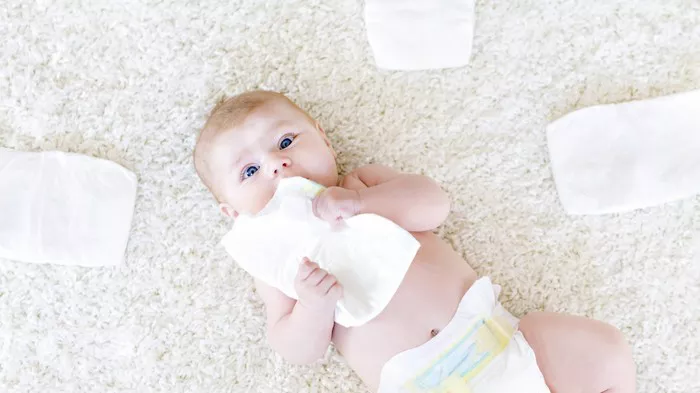Babies, the epitome of innocence and wonder, bring immeasurable joy to families worldwide. From their delicate coos to their infectious giggles, every aspect of a baby’s life fascinates caregivers. One question that often perplexes new parents is what babies wore before the advent of modern diapers. Delving into history and anthropology, we uncover fascinating insights into the practices of yesteryears and how they compare to contemporary diapering methods. This article aims to explore the evolution of infant clothing and care practices, shedding light on the age-old query: What do babies wear before diapers?
Ancient Practices and Cultural Perspectives
Ancient civilizations approached infant care with ingenuity and resourcefulness. In societies where diapers were non-existent or rudimentary, caregivers devised various solutions to address the needs of their little ones. For instance, in ancient Greece and Rome, infants were often swaddled tightly in cloth strips or bands known as “fascia.” These wraps served not only to keep babies warm but also to contain their bodily excretions to some extent.
Similarly, in many indigenous cultures across the globe, traditional practices centered around natural materials such as animal skins, plant fibers, or even mosses. These materials were fashioned into absorbent layers or coverings to manage infants’ waste. The Inuit, for instance, used sealskin pouches lined with soft moss for their babies, while Native American tribes utilized woven reeds or grasses for similar purposes.
In regions where cloth was abundant, such as parts of Asia and Africa, caregivers crafted simple garments or makeshift diapers from available fabrics. These cloth coverings, though basic in design, provided a degree of protection against leaks and soiling.
Transition to Modern Diapers: A Historical Perspective
The transition from traditional practices to modern diapering methods was gradual and influenced by various factors, including advancements in textile technology, changing social norms, and healthcare developments. During the late 19th and early 20th centuries, the industrial revolution spurred innovations in textile manufacturing, making cloth more accessible and affordable for the masses.
With the rise of urbanization and the proliferation of middle-class households, there emerged a demand for more convenient and hygienic solutions for infant care. This demand catalyzed the invention and commercialization of the modern disposable diaper. In 1942, Marion Donovan, a mother and inventor, patented the first disposable diaper, revolutionizing the way caregivers approached infant hygiene.
The subsequent decades witnessed significant improvements in diaper design, with manufacturers introducing features such as elastic leg gathers, adhesive tapes, and super-absorbent polymers. These innovations enhanced the convenience, comfort, and performance of disposable diapers, cementing their status as the preferred choice for many parents in Western societies.
Contemporary Perspectives on Infant Clothing and Diapering
In today’s world, the options for infant clothing and diapering are vast and diverse, catering to a wide range of preferences and lifestyles. While disposable diapers remain popular in many parts of the world due to their convenience and efficiency, there has been a resurgence of interest in eco-friendly alternatives such as cloth diapers and diaper covers.
Cloth diapers, once considered old-fashioned, have undergone a revival as environmentally conscious parents seek sustainable alternatives to disposable products. Modern cloth diapers come in a variety of styles, including prefolds, fitted diapers, and pocket diapers, offering customizable options to suit individual needs.
In addition to cloth diapers, there has been a growing market for biodegradable disposable diapers made from eco-friendly materials such as bamboo fibers or wood pulp. These diapers offer a compromise between convenience and sustainability, appealing to consumers concerned about the environmental impact of traditional disposable diapers.
Beyond diapers, the choice of clothing for infants has also evolved to reflect changing fashion trends and parenting philosophies. While traditional garments such as onesies, rompers, and sleepers remain staples in a baby’s wardrobe, there has been an emergence of gender-neutral and organic clothing lines catering to the preferences of modern caregivers.
Conclusion
The journey of infant clothing and diapering practices spans millennia, reflecting the ingenuity, adaptability, and cultural diversity of human societies. From ancient swaddling techniques to modern disposable diapers, caregivers have always sought ways to ensure the comfort, health, and well-being of their little ones.
As we navigate the myriad choices available in today’s market, it is essential to consider not only the practical aspects of diapering but also the environmental and social implications of our choices. Whether opting for cloth diapers, disposable diapers, or alternative solutions, the ultimate goal remains the same: to provide babies with the care, comfort, and love they need to thrive in the world.
In answering the age-old question of what babies wore before diapers, we uncover not only a rich tapestry of history and culture but also insights into the timeless bond between caregivers and their precious bundles of joy.


